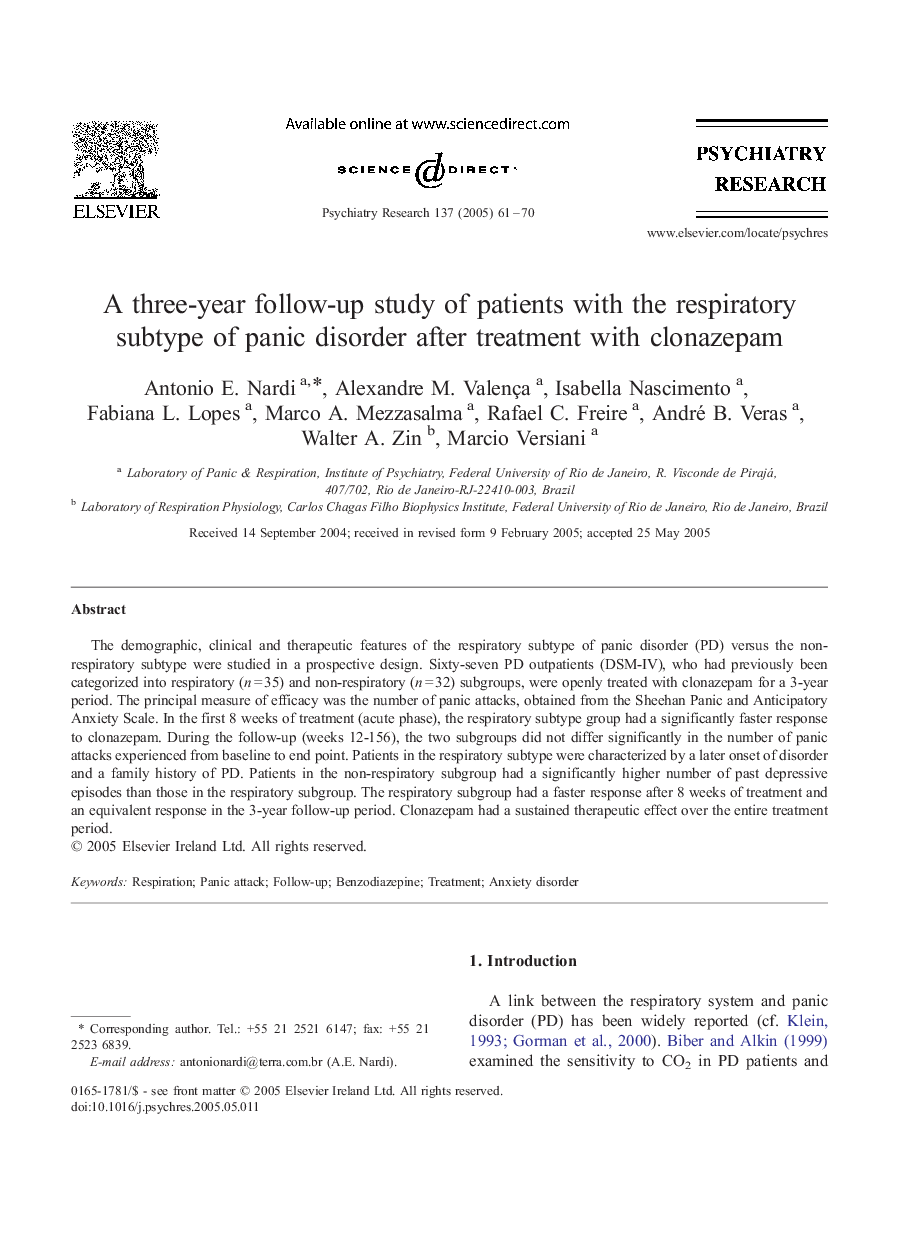| Article ID | Journal | Published Year | Pages | File Type |
|---|---|---|---|---|
| 9645954 | Psychiatry Research | 2005 | 10 Pages |
Abstract
The demographic, clinical and therapeutic features of the respiratory subtype of panic disorder (PD) versus the non-respiratory subtype were studied in a prospective design. Sixty-seven PD outpatients (DSM-IV), who had previously been categorized into respiratory (n = 35) and non-respiratory (n = 32) subgroups, were openly treated with clonazepam for a 3-year period. The principal measure of efficacy was the number of panic attacks, obtained from the Sheehan Panic and Anticipatory Anxiety Scale. In the first 8 weeks of treatment (acute phase), the respiratory subtype group had a significantly faster response to clonazepam. During the follow-up (weeks 12-156), the two subgroups did not differ significantly in the number of panic attacks experienced from baseline to end point. Patients in the respiratory subtype were characterized by a later onset of disorder and a family history of PD. Patients in the non-respiratory subgroup had a significantly higher number of past depressive episodes than those in the respiratory subgroup. The respiratory subgroup had a faster response after 8 weeks of treatment and an equivalent response in the 3-year follow-up period. Clonazepam had a sustained therapeutic effect over the entire treatment period.
Related Topics
Life Sciences
Neuroscience
Biological Psychiatry
Authors
Antonio E. Nardi, Alexandre M. Valença, Isabella Nascimento, Fabiana L. Lopes, Marco A. Mezzasalma, Rafael C. Freire, André B. Veras, Walter A. Zin, Marcio Versiani,
